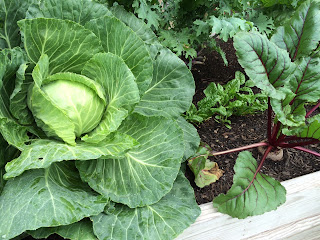In 1964, both of these had the same value.
Today, the one ounce silver dollar is worth 15 to 20 times more.
In our blog
Investing for Preppers we show how much each one of these dollars can buy today as well as in 1964, the last year our money had silver in it. But today, lets talk about what form of cash you need to store for emergencies.
Clearly we don't want to be spending silver dollars during a 3-day power outage. At the same time, we won't be able to spend paper dollars after a total economic collapse. So we need paper dollars for short term events and sliver dollars for long term events.
So the question arises, at what point does the paper dollar start to diminish in value and silver starts becoming necessary for purchases?
In August 1921, the Germans made the first billion mark (gold) payment for World War I reparations. This immediately triggered a 1/3 fall in the value of the Paper Mark. We call this
Trigger Day
Imagine that over night everything that cost $1,00 yesterday, costs $1.50 today.
June 24, 1922, 10 months later, the Germany were struggling to make the war reparation payments, when several government officials were assassinated. The paper mark value dropped to 300 paper marks = 1 gold mark.
Now everything that cost $1.00 only 10 months ago, costs $300 today.
January 1923, 18 months after Trigger Day, the German paper mark drops to 4,281 paper marks to 1 gold mark.
February 1923, 1 gold mark = 6,650 paper marks.
May 1923, 1 gold mark = 11,355 paper marks.
June 1923, 1 gold mark = 26,202 paper marks.
July1923, 1 gold mark = 84,186 paper marks.
August 1923, 1 gold mark = 1,100,632 paper marks.
2 years after the first drop, things that used to cost $1 now cost over $1,000,000.
September 1923, 1 gold mark = 23,500,000 paper marks,
October 1923, 1 gold mark = 6,100,000,000 paper marks
November 1923, 1 gold mark = 522,300,000,000 paper marks,
Falling in value by 300 marks in roughly 300 days, a silver dollar that initially
cost $20 is worth more than $20 in paper money after 20 days. For this reason I might
suggest that we need enough cash in paper dollars to survive for 3 weeks
(21 days).
Considering inflation, how much money is this? Suppose we want to have
the equivalent cash to buy $100 worth of groceries and supplies per
week; here is how much we need to have on hand. The first column is how much you would spend each day, the last column is a running total including inflation of how much you would need to have the equivalent of $100/week of grocery money. So after 7 days, your hundred dollar ($100) budget (left column) would require having four hundred dollars ($400) after 7 days of inflation.
If you wanted to allow $200 per week, simply double this amount; $300, triple this amount.
After we have this amount of cash in small bills (NOT $100's), then we should start saving silver coins (not bars). So how much in silver coins do we need?
In our blog
Investing for Preppers we show the value of silver in terms of groceries and essentials. From this I would suggest that we need enough to buy groceries, supplies, seeds, fertilizer and gardening tools to prepare for long term sustainable living. Depending on the time of the year, you could need as much as 9 months supply to get through the winter, plant in the spring and harvest a crop.
Considering that the silver will have at least 10 times the value of the dollar and will be sustainable, you should figure on having 10 silver dollars or equivalent US silver coins for each $100 of weekly budget above. So for 9 months (worst case) x 4.3 weeks per month, or $387 in silver coin. I would suggest that half of this be in silver Eagles and the other half in sliver quarters and dimes. At the sames time, it would be good to own some silver or gold mining stocks, up to 10% of your net worth.
So for each hundred dollars of weekly groceries and supplies that you need to budget, you will require $3,300 of cash and $387 dollars (face value) of silver coin. Its also good to consider having a few items for
Barter.
You can use this math to prepare at incremental levels. Instead of having three weeks worth of cash ($3,300) you can start by having 1 weeks worth or $400. Then when you have your cash, you can get your silver coins a few at a time. In the end, these will hold their value fairly well unlike some supplies with a shelf life that will expire and be worthless some day.
This should be one part of an Incremental Prepper Plan.
For additional information see the following
links:
Blog Table of Contents






